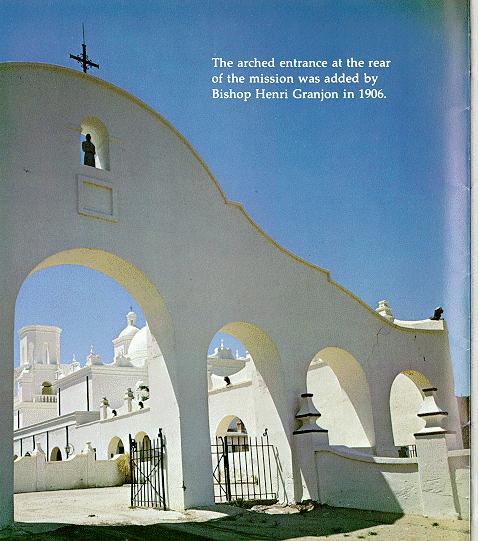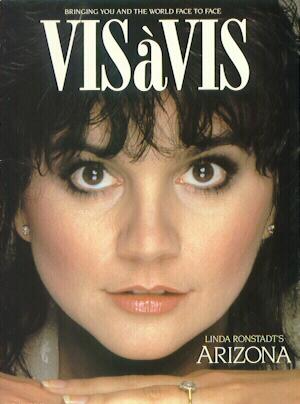 |
Linda Ronstadt returned to her roots two years ago when she recorded Canciones de mi Padre, an album of the authentic Mexican songs she grew up with in Tucson. Hers was a close-knit and very musical bicultural family. Everyone sang. Her brother was a renowned boy soprano who toured all over the world as soloist with the Tucson Boys Choir. Her grandfather had a local orchestra that played in the town square and as far away as Los Angeles, and her father was particularly devoted to music. The family has been in Tucson for many years - first on a cattle ranch and most visibly in the family hardware store which, until recently, stood in the center of town. |
| I always thought that the place where I grew up, Tucson, was special, and so was the fact that we had horses. When I was five years old, I had a pony and I went wherever I pleased. I remember when there was nothing on the north side of town between the river and the [Santa] Catalina Mountains. We used to exercise our horses in the riverbed. |
| We had a completely unobstructed view of the mountains from our house. No houses, no trees, nothing. The Catalinas are just spectacular because they take the light so beautifully and change all the time, turning the most lovely shade of rose at dusk. My mother used to say that they had their dancing dresses on. |
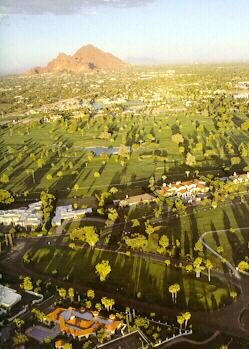 | Today, the family house is on the remains of my grandfather's old cattle ranch, which used to stretch all the way to the Catalina Mountains. He sold it off in chunks during the Depression, and we lived on the remaining 10 acres. Things are all the same at the big family compound, even though condominiums have sprung up all around. We still have chickens and an outdoor place to fix tortillas over the fire, the way they used to make them. We still hang meat off the roof to make Sonoran-style dried beef. Meals are served outside, beans and ribs, or chicken, or anything anybody shot recently, or that dried meat turned into machaca, and those amazing tortillas. That's the real Sonoran ranch-style food. |
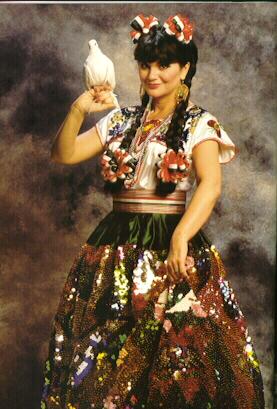
|
I've been coming back to Tucson every April for four years for the Mariachi Conference. In fact, it was because of the conference I was able to make Canciones de mi Padre. For years I'd wanted to make a record of traditional Mexican music, but I didn't know how to go about meeting the bands. I'd been exposed to all those mariachi songs since I was a child, but I didn't know how to sing them as a professional. It turned out that the Mariachi Vargas [de Tecalitlan] - the best band in Mexico and on every great mariachi record - was the centerpiece of the conference every year. |
| The desert is a harsh enviroment and it can be very unforgiving, but I find it hauntingly beautiful and I prefer it to anywhere else. The saguaro [cacti] are so stately, and there's only one place in the world they grow, in the Sonora Desert around Tucson. My dad taught us survival tactics when we where little kids - how to get water out of a cactus, what things were edible, how to avoid flash floods by staying out of washes - in case our horses bucked us off and we had to walk back home at three in the afternoon in the middle of July. |
| When Paul Simon asked me for something from my childhood that visually symbolized the part of the country I grew up in, without even thinking I immediately said the San Xavier [del Bac] Mission, so he put it in a song ["Under African Skies"] that I sang with him as a duet on his Graceland album. |
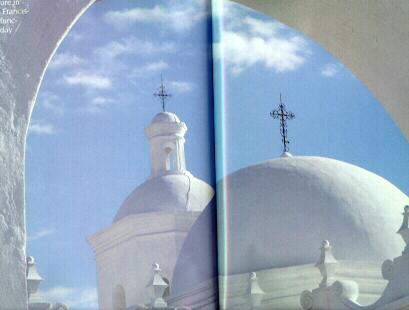 The mission is exquisitely beautiful. There's something special about the proportions and the
way it's white-washed
on the outside; on the inside, the Indian mind and mythology are completely expressed. I don't
know if it's
a race memory or what, but I seem to recall the mission with the gratitude one would feel after
spending
several days riding across the desert - seeing that symbol of comfort and water and food. That
mission must
have been quite a site for those early travelers. The mission is exquisitely beautiful. There's something special about the proportions and the
way it's white-washed
on the outside; on the inside, the Indian mind and mythology are completely expressed. I don't
know if it's
a race memory or what, but I seem to recall the mission with the gratitude one would feel after
spending
several days riding across the desert - seeing that symbol of comfort and water and food. That
mission must
have been quite a site for those early travelers. |
| Tucson also has the most beautiful light in the world. Even at night it's amazing. There are two places on the planet that have the lowest amount of ambient light at night where the sky is very, very dark and the stars are plainly visible - a place in Africa and Tucson. I remember before the city grew so big, the night sky was astounding - you felt as if you could reach out and touch the Milky Way. There's something wonderful about the air, too, something soft. I don't know if it's a combination of the air and the light and the mountains, but when I bring people to Tucson they always relax and they want to come back as much as I do. |
